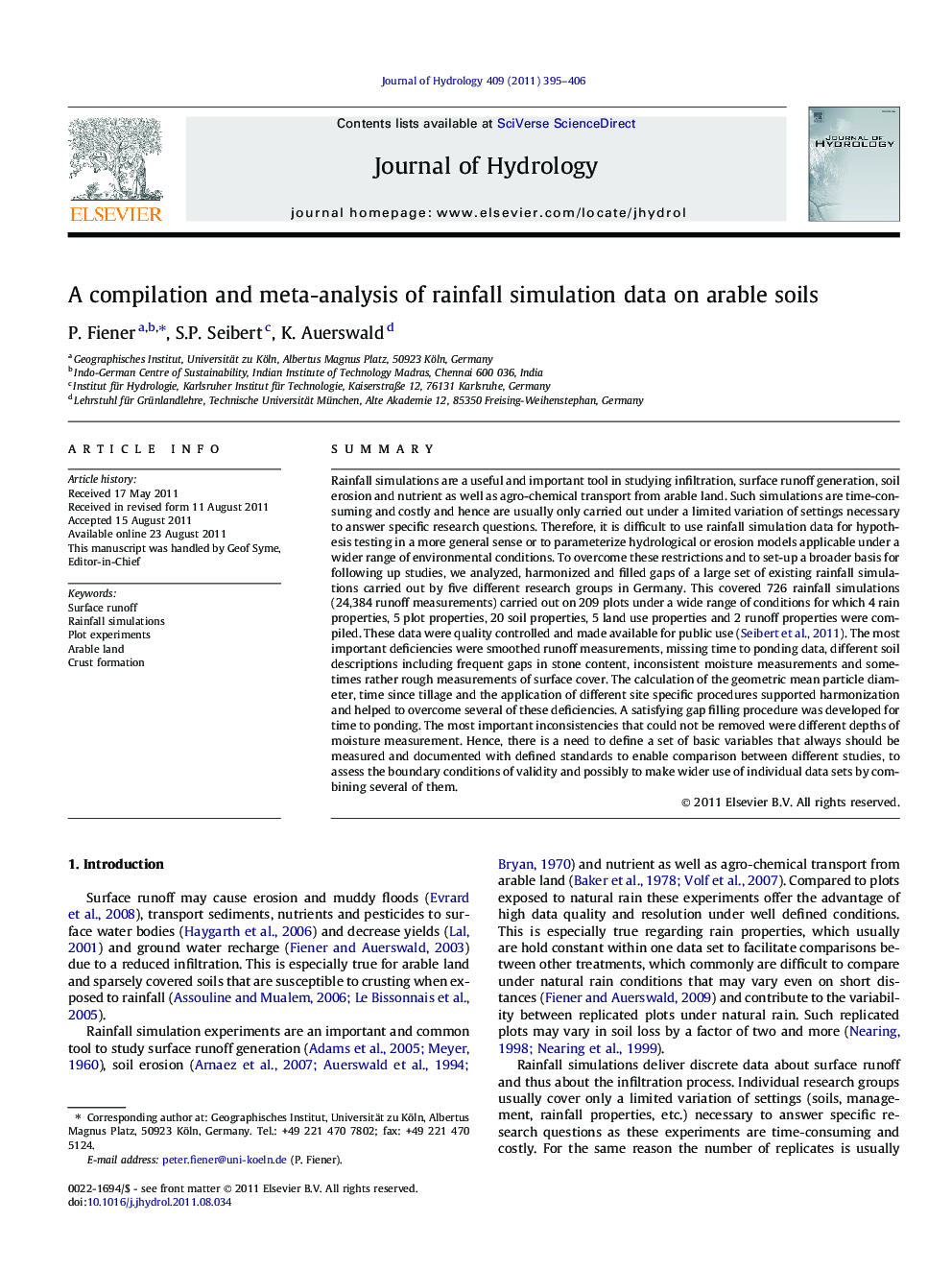| Article ID | Journal | Published Year | Pages | File Type |
|---|---|---|---|---|
| 4577499 | Journal of Hydrology | 2011 | 12 Pages |
SummaryRainfall simulations are a useful and important tool in studying infiltration, surface runoff generation, soil erosion and nutrient as well as agro-chemical transport from arable land. Such simulations are time-consuming and costly and hence are usually only carried out under a limited variation of settings necessary to answer specific research questions. Therefore, it is difficult to use rainfall simulation data for hypothesis testing in a more general sense or to parameterize hydrological or erosion models applicable under a wider range of environmental conditions. To overcome these restrictions and to set-up a broader basis for following up studies, we analyzed, harmonized and filled gaps of a large set of existing rainfall simulations carried out by five different research groups in Germany. This covered 726 rainfall simulations (24,384 runoff measurements) carried out on 209 plots under a wide range of conditions for which 4 rain properties, 5 plot properties, 20 soil properties, 5 land use properties and 2 runoff properties were compiled. These data were quality controlled and made available for public use (Seibert et al., 2011). The most important deficiencies were smoothed runoff measurements, missing time to ponding data, different soil descriptions including frequent gaps in stone content, inconsistent moisture measurements and sometimes rather rough measurements of surface cover. The calculation of the geometric mean particle diameter, time since tillage and the application of different site specific procedures supported harmonization and helped to overcome several of these deficiencies. A satisfying gap filling procedure was developed for time to ponding. The most important inconsistencies that could not be removed were different depths of moisture measurement. Hence, there is a need to define a set of basic variables that always should be measured and documented with defined standards to enable comparison between different studies, to assess the boundary conditions of validity and possibly to make wider use of individual data sets by combining several of them.
► We compiled and analyzed a data set of 726 rainfall simulations on 209 plots. ► This allowed to overcome deficiencies inherent in single-source data sets. ► The compilation gives information on infiltration and runoff not obtainable otherwise. ► The compilation allowed defining basic standards for rainfall simulations studies.
